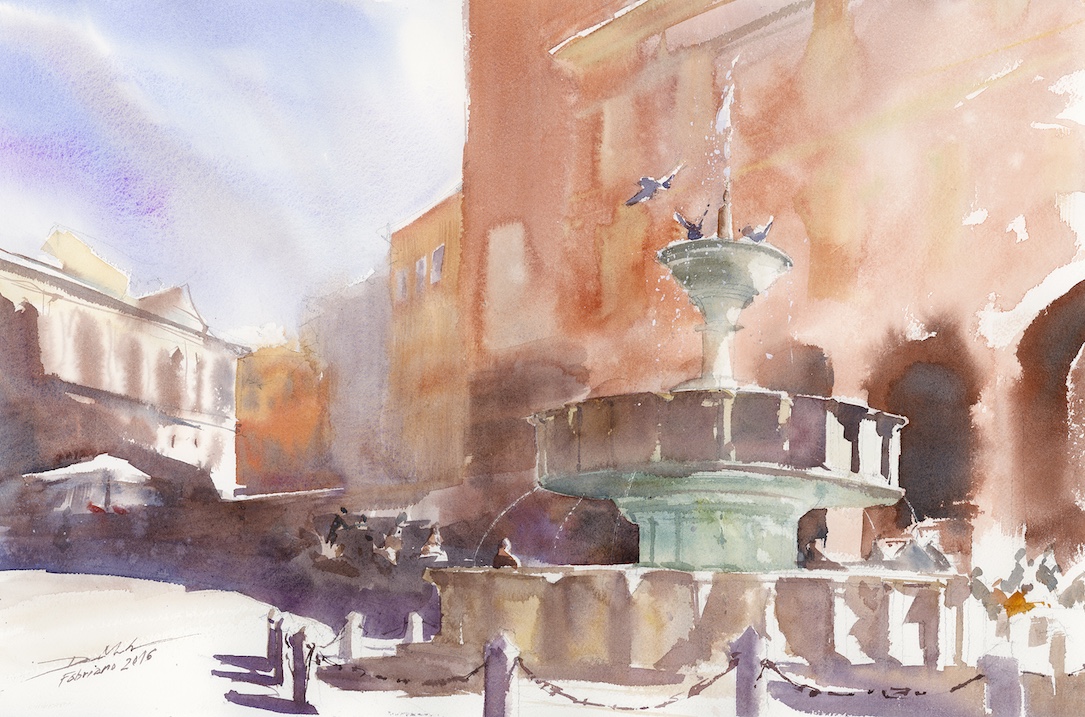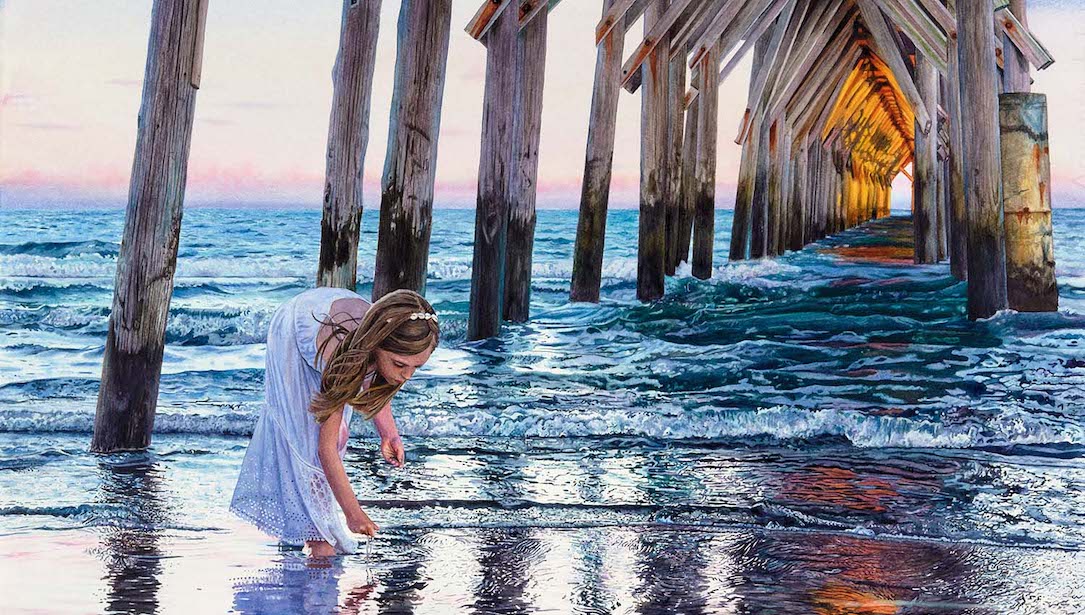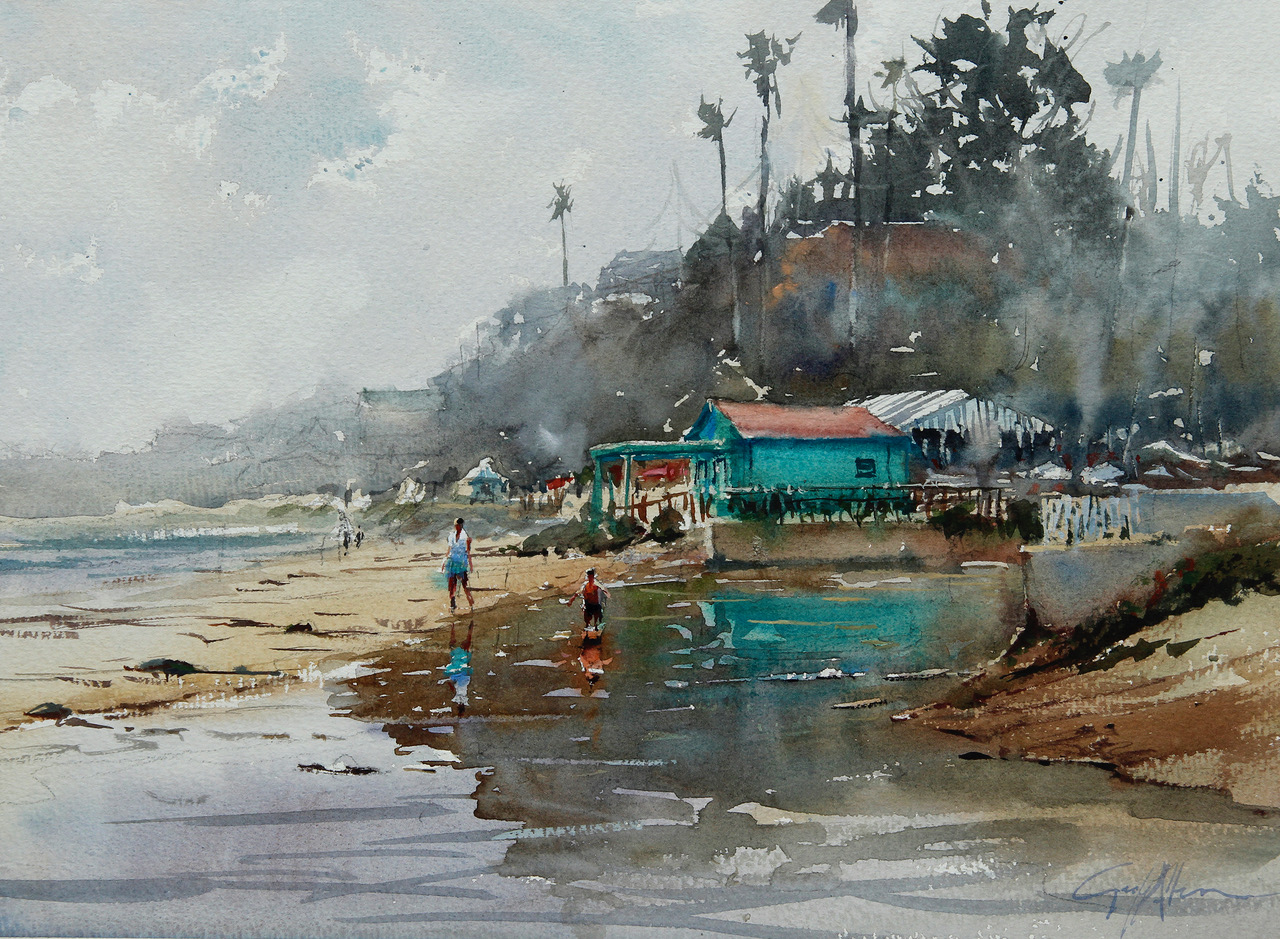Minh Dam from Vietnam shared some of his favorite tips and techniques with watercolor.
Here’s a Q&A with Minh:
Why do you make art?
I believe that art chose me. My goal was to become full-time architect and I discovered watercolor during my preparation for the entry exam to the architectural university. I feel that art is a beautiful way to tell stories – a universal language to connect people.
How long have you been painting?
I was introduced to watercolor in 2004 and fell in love with this medium right away. I have been painting ever since.
Did you have formal art training?
I did, but with a more architectural approach rather than fine arts. I took several drawing courses, focusing on perspective, geometry, architectural styles and historical details – from ancient times to the modern era.
Are you a working artist or a hobbyist?
I’m working as a part-time artist. I also teach architecture at university, as well as and drawing & watercolor privately. I’m also spending time promoting and organizing art events and exhibitions.
What inspires you?
The inspiration for my art comes from stories related to places I’ve visited and people I’ve met. Sometimes I also use my art to point out certain issues that are sometimes awkward to express in words.
What kind of music do you listen to while painting?
I try to get into a certain mood thru music. For example, when I paint motifs of Vietnam, I listen to music related to Vietnam, or when I paint Italian landscapes, I listen to Italian music.
Have you had a mentor?
I didn’t have a formal mentor, but I feel that I had a few informal ones who often helped me with very useful advice, not only in art but also in life.
Do you paint every day?
No. I would be overworked if I did, but I try to make around 2-3 paintings every week.
Do you paint one piece at a time or work on several at the same time?
I work on concepts and ideas for several paintings at the same time, but when I start to paint, I usually work on just one piece at a time.
Do you prefer painting in studio or en plein air?
I enjoy both. When I paint en plein air, I focus more on creating the ambience of the place I paint. For studio works I focus more on stories I want to tell. Plein airs also serve me as the moment to gather information and stories for my studio works.
How many core colors do you use?
My formal palette contains 18 colors, which I divide equally in to 3 groups:
1 – Nature (blues, greens and darks): My absolute core colors are Cobalt Blue, Viridian, Neutral Tint
2 – Light & Shadow (from yellows to violets): My favorites are Hansa Yellow Medium, Pyrrol Red and Cobalt Blue Violet
3 – Earth (earth tones): I use Yellow Ochre and Piemontite Genuine the most
I also have a few rotating colors which help me to shift my palette into whatever tone is most suitable for the motif or geographical region that I’m painting, to keep things fresh and unique. Currently I enjoy using Jadeite Genuine for Asian landscapes and Quinacridone Magenta, which is great for portraits and figurative work.
Tubes, pans or sticks?
I use tubes most of the time, but pans are also fine for plein air sketches.
When do you know that your piece is finished?
I used to paint en plein air, which trained me to not overwork my paintings. Most of the time, I leave a painting at 95% done – I rarely finish at home what I started en plein air. When a painting reaches a certain point, it can be considered as finished at any time.
••••••••••
Join us online each week via Zoom or Facebook for an Up Close and Personal Conversation with John Cogley (Daniel Smith Owner and CEO) along with guest artists from around the world. On Thursdays (2:00pm Pacific), John and some of our Brand Ambassadors highlight a group of colors and answer your questions. On Fridays (10:30am Pacific), a guest artist shares a demo with their favorite tips and techniques. Click here for the upcoming week’s Zoom links.
If you prefer, you can visit our Facebook page at showtime to watch live. Replays can be watched on Facebook or YouTube. La traducción al español está disponible – selecciona el canal en español en Zoom.







